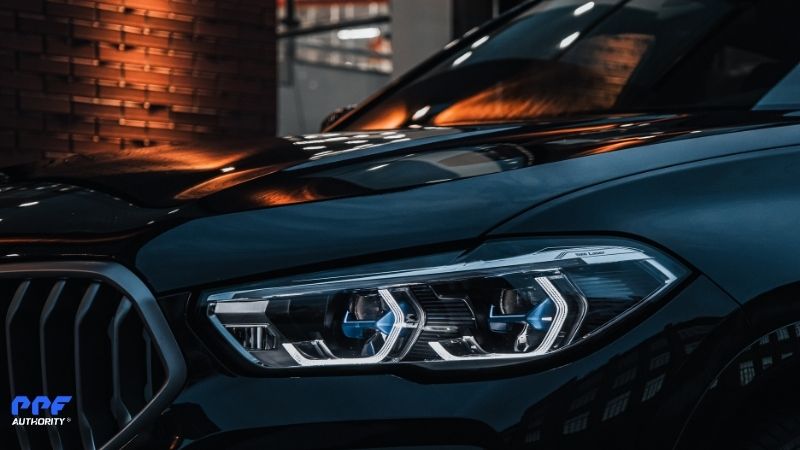Ceramic coatings have revolutionized vehicle care and protection, becoming a go-to solution for car owners seeking durability, gloss, and ease of maintenance. But ceramic coatings didn’t emerge overnight—they are the result of decades of innovation and technological refinement. From their early industrial uses to their cutting-edge applications in automotive care, ceramic coatings have evolved significantly over the years.
In this article, we’ll explore the history of ceramic coatings, trace their technological advancements, and conclude with the latest updates shaping the future of this remarkable technology
The Origins of Ceramic Coatings
Industrial Beginnings
Ceramic coatings were first developed for industrial applications in the mid-20th century. These coatings were designed to protect machinery and surfaces in harsh environments, such as:
- Aerospace and Defense: Ceramic coatings were used to protect aircraft components from extreme heat, friction, and wear.
- Manufacturing: Coatings provided corrosion resistance and durability for tools and equipment exposed to chemicals and high temperatures.
These early coatings utilized ceramic materials like silicon dioxide (SiO₂) and titanium dioxide (TiO₂), known for their heat resistance, hardness, and chemical stability.
Transition to Consumer Applications
By the late 20th century, advancements in material science allowed ceramic coatings to be adapted for consumer products. Industries such as cookware and electronics began using ceramic coatings for their non-stick and protective properties. This laid the groundwork for their eventual use in automotive applications.
The Introduction of Ceramic Coatings in Automotive Care
Early Automotive Coatings
The concept of protective coatings for cars began with waxes and sealants. However, these products offered only short-term protection and limited durability. As consumers demanded longer-lasting solutions, innovators began exploring advanced materials, including ceramics.
The Birth of Automotive Ceramic Coatings
In the early 2000s, ceramic coatings were introduced to the automotive industry. These coatings leveraged nanotechnology to create a thin, invisible layer that chemically bonded with a car’s paint. Early products focused on:
- Hydrophobic Properties: Repelling water and reducing water spots.
- UV Protection: Preventing paint fading and oxidation caused by sunlight.
- Durability: Providing longer-lasting protection compared to waxes and sealants.
At this stage, ceramic coatings were primarily available through professional detailing services, as their application required specialized training and equipment.
Technological Advancements Over the Years
Improved Formulations
The first-generation ceramic coatings were effective but challenging to apply. Over time, manufacturers developed improved formulations that:
- Enhanced Bonding: Modern coatings chemically bond more effectively to paint surfaces, increasing durability.
- Reduced Application Complexity: User-friendly products allowed for easier application and minimized the risk of mistakes.
- Extended Lifespan: Today’s coatings can last anywhere from 1 to 10 years, depending on the product and maintenance.
Nanotechnology Breakthroughs
Nanotechnology played a pivotal role in advancing ceramic coatings. By engineering particles at the molecular level, manufacturers achieved:
- Greater Surface Coverage: Nano-sized particles fill microscopic pores in the paint, creating a smooth and seamless protective layer.
- Stronger Hydrophobic Properties: Improved water repellency ensures better self-cleaning and resistance to dirt and grime.
- Enhanced Chemical Resistance: Modern coatings can withstand harsh chemicals, bird droppings, tree sap, and road salt.
Expansion to Other Surfaces
While initially designed for paint protection, ceramic coatings have expanded to other areas of the vehicle, including:
- Wheels: Protects against brake dust and high temperatures.
- Glass: Improves visibility by repelling rain and reducing dirt buildup.
- Plastics and Trim: Prevents fading and discoloration of exterior plastic components.
DIY Kits
As demand for ceramic coatings grew, manufacturers introduced DIY-friendly kits for car enthusiasts. While not as durable as professional-grade products, these kits made ceramic technology accessible to a wider audience.
The Latest Updates in Ceramic Coating Technology
Graphene-Infused Ceramic Coatings
One of the most significant recent innovations is the introduction of graphene-infused ceramic coatings. Graphene, a material derived from graphite, offers several advantages:
- Increased Durability: Graphene coatings are even harder and more resistant to scratches than traditional ceramic coatings.
- Superior Hydrophobic Properties: Provides improved water repellency and easier cleaning.
- Reduced Water Spotting: Graphene’s heat resistance minimizes the formation of water spots, a common issue with traditional coatings.
UV-Tracing Coatings
Some advanced ceramic coatings now include UV tracers, which allow installers to ensure full and even coverage using specialized UV lights. This ensures no spots are missed during application, resulting in a more durable and consistent finish.
Self-Healing Coatings
Emerging self-healing ceramic coatings can repair minor scratches and swirl marks when exposed to heat. While this technology is still in its early stages, it promises to reduce the need for frequent polishing and paint correction.
Hybrid Coatings
Manufacturers are developing hybrid products that combine the benefits of ceramic coatings with other technologies, such as:
- Ceramic + Wax Hybrids: For car enthusiasts who want the gloss of wax with the durability of ceramics.
- Ceramic Sealants: Easy-to-apply sprays that provide a ceramic-like finish for short-term protection.
Environmental Focus
Modern ceramic coatings are increasingly eco-friendly, with water-based formulations and reduced VOC (volatile organic compound) emissions. This aligns with growing consumer demand for sustainable products.
Conclusion: The Future of Ceramic Coatings
From their industrial origins to their dominance in automotive care, ceramic coatings have come a long way. Today’s formulations offer unparalleled protection, durability, and aesthetics, with innovations like graphene, self-healing properties, and UV tracers pushing the boundaries of what ceramic coatings can achieve.
As technology continues to evolve, ceramic coatings are becoming even more versatile, user-friendly, and effective. Whether you’re a car enthusiast seeking showroom shine or a driver looking for long-term protection, ceramic coatings remain at the forefront of automotive care—and their future looks brighter than ever.
